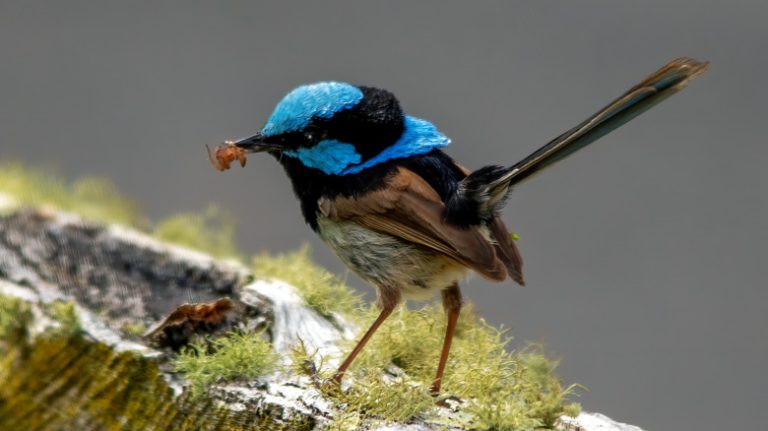In the world of gardening and landscaping, one common problem that many people face is the issue of black walnut trees and their effect on other plants and flowers. While black walnut trees can be a beautiful addition to any yard or garden with their large, spreading branches and dark green foliage, they can also be a nightmare for plantings. The reason for this is a compound called juglone, which is found in the leaves, bark, and roots of black walnut trees.
Juglone is highly toxic to many plants and flowers, and can even kill them outright. When black walnuts are planted in a garden or yard, they release juglone into the soil through their roots. This can cause problems for otherwise healthy plants, as the juglone can leach into the soil and toxify it. The effects of juglone toxicity can be seen in the form of stunted growth, wilting leaves, yellowing foliage, and eventual death of the affected plants.
The toxicity of juglone can be mitigated to some extent by removing black walnut trees from the landscape. However, this is not always a simple solution, as black walnuts have deep roots and are difficult to remove. Cutting down the tree and removing the stump may not completely neutralize the effects of juglone, as the compound can still linger in the soil for years.
So, how can one safely plant and grow other species of plants and flowers near black walnut trees? One expert suggests using containers or raised beds for planting, as this can provide a barrier between the roots of the black walnut tree and the soil. Additionally, adding compost to the soil can help to neutralize the effects of juglone, as the decomposition of organic matter can counteract the toxicity of the compound. However, it is important to note that even with these precautions, certain species of plants may still struggle to thrive near black walnut trees.
In conclusion, black walnut trees can be a beautiful and valuable addition to a yard or garden. However, their toxic effects on other plants and flowers should be taken into consideration when planning your landscaping. By understanding the effects of juglone and taking the necessary precautions, you can create a safe and thriving landscape that is not affected by the toxicity of black walnut trees.
juglone – tolerant evergreens neutralization 609409
Planting fruit trees in your yard can be a rewarding experience, but it can also come with its share of challenges. If you have a walnut tree nearby, you may have noticed that your fruit trees, along with other plants in your garden, are struggling. This is likely due to the presence of juglone, a chemical that is toxic to many plants.
Juglone is naturally produced by walnut trees and can be found in their leaves, bark, and roots. It is released into the soil and can travel within the dripline of the tree, affecting plants within its vicinity. The effects of juglone toxicity can vary from stunted growth and yellowing leaves to complete plant death.
One way to prevent the harmful effects of juglone is to choose juglone-tolerant evergreens for your landscape. These evergreens are able to neutralize the toxic effects of juglone and thrive in the presence of walnut trees. Some examples of juglone-tolerant evergreens include black elderberry, Siberian pea shrub, and common privet.
If you already have fruit trees or other plants that are being affected by juglone, there are steps you can take to mitigate the damage. One option is to remove any walnut trees or other sources of juglone from your yard. This can be a daunting task, especially if you have large, established trees. In such cases, it may be best to consult with an expert to help with the removal process.
Another option is to create a barrier between the affected area and the toxic source. This can be done by constructing raised beds or planting in containers, such as tubs or aging barrels. By doing so, you can create a safe environment for your plants that is free from juglone toxicity.
In addition to protecting your plants from juglone toxicity, it is also important to maintain the overall health of your yard and gardens. This includes proper watering, fertilization, and regular pruning. By keeping your plants healthy, you can help them better withstand the effects of juglone.
In conclusion, juglone toxicity can be a problem for fruit trees and other plants in gardens planted near walnut trees. However, by choosing juglone-tolerant evergreens, removing or isolating the toxic source, and maintaining the health of your plants, you can neutralize the effects of juglone and create a safe and thriving landscape.
References:
– Bonner, F.T. (1993). Effects of the allelochemical juglone on six Juglandaceae tree species. Bulletin of the Torrey Botanical Club, 120(2), 123-128.
– Michigan State University Extension. (2011). Growing fruit trees in the presence of black walnut.
– Plant Advice. (n.d.). Neutralizing juglone toxicity.
– University of California Statewide Integrated Pest Management Program. (2016). Black walnut toxicity.
Expert Response
In landscaping, when planting gardens or adding new trees to landscapes, it is important to consider the species you choose and how they might interact with other plants. Black walnut trees, like many other trees, contain a toxic chemical called juglone. This toxin can have negative effects on the growth and health of nearby plants.
Black walnut trees produce juglone in their leaves, bark, and roots. When these parts of the tree decompose, the juglone can leach into the soil. The toxin is then taken up by other plants through their roots, which can cause them to die or suffer other health issues.
To mitigate the effects of juglone, there are several steps you can take:
| 1. | Plant vegetable gardens and flowers within the dripline of black walnut trees to neutralize the toxin. These plants are typically highly tolerant to juglone and can help prevent its negative effects on other plants. |
| 2. | Avoid planting trees, shrubs, or other vegetation near black walnut trees. The juglone can affect their growth and health, leading to a decline in their overall landscape value. |
| 3. | If you want to protect your gardens or plantings from the effects of juglone, you can add a layer of wood chips or mulch to the soil. This can help to neutralize the toxin and prevent it from leaching into the soil and affecting your plants. |
| 4. | According to expert references from Michigan State University, it is important to remove any fallen leaves or fruits from black walnut trees. These plant parts contain high levels of juglone and can contribute to the toxicity of the soil. |
In summary, when dealing with black walnut trees in your landscape, it is important to understand the potential toxicity of juglone and take necessary steps to protect your plants. By neutralizing the toxin and avoiding planting sensitive species, you can ensure the health and longevity of your landscape.
Your black walnut tree is out to get you
If you have a black walnut tree in your landscaping, you may need to be highly cautious. While black walnut trees are prized for their beautiful evergreens and shade, they can be dangerous to certain plants and animals around them.
The black walnut tree, also known as juglans nigra or the American walnut, is a member of the Juglandaceae family. It produces a toxin called juglone that can have a detrimental effect on nearby plants and soil health.
When the roots of the black walnut tree release juglone into the soil, it can remain toxic for a long time, making it difficult for other plantings to survive in the vicinity. Certain plants, such as tomatoes, potatoes, azaleas, and rhododendrons, are particularly intolerant to juglone and may show signs of decline, such as wilting leaves or stunted growth.
So, what can you do if you have a black walnut tree in your landscape and want to protect your plantings? Experts recommend removing affected plants and focusing on species that are more tolerant to juglone, such as hostas, daylilies, and coral bells.
Another option is to neutralize the toxic effects of juglone by adding organic matter to the soil. Amending the soil with compost, leaf mold, or well-rotted manure can help break down the juglone and create a more neutral environment for other plants.
It’s important to keep in mind that the toxic effects of the black walnut tree are not limited to plants. Some animals, such as horses and dogs, are also sensitive to juglone and can experience health issues if exposed to it. It is recommended to keep these animals away from black walnut trees and their fallen leaves or sticks.
In conclusion, while black walnut trees can be a beautiful addition to your landscape, they can also pose a threat to certain plantings and animals. By being aware of the toxic effects of juglone and taking appropriate measures to neutralize it, you can ensure a safe and healthy environment within your gardens.
Sources:
- Bonner, F. T., & Vozzo, J. A. (1987). Allelopathic potential of black walnut (Juglans nigra L.). Forest Science, 33(2), 350-357.
- Michigan State University Extension. (2013). Wilting of black walnut toxicity. Michigan State University Extension. Retrieved from https://www.canr.msu.edu/news/wilting_of_black_walnut_toxicity
- 42 Trees, (n.d.). Black walnut: Toxic to other plants. 42 Trees. Retrieved from https://www.42trees.com/black-walnut-toxic-to-other-plants/
Toxic Ooze
In gardening, dealing with toxic substances can be a challenge. One such substance, known as “toxic ooze,” comes from black walnut trees. Juglone, a toxin produced by these trees, can kill or negatively affect nearby plants and animals. So, what can you do to mitigate the problems caused by this toxic ooze?
First, it’s important to understand what juglone is and how it affects your garden. Juglone is a toxic substance found in the roots, bark, and leaves of black walnut trees. When these parts of the tree decay or are cut down, they release juglone into the soil. As the soil ages, the toxicity increases, making it difficult for most plants to grow in the affected area.
If you have black walnut trees in your yard or nearby, there are steps you can take to protect your gardens from the toxic ooze. One option is to remove the black walnut trees altogether. However, if you want to keep the trees for their shade or other reasons, there are ways to neutralize the toxin.
An expert in soil and landscaping can help you determine the best course of action. They may recommend adding amendments to the soil, such as activated carbon or compost, to neutralize the juglone. It’s important to note that neutralization may take time, and some plants may still be affected even after the toxin is neutralized.
To further protect your gardens from the toxic ooze, consider avoiding planting highly susceptible plants, such as tomatoes and potatoes, in the affected area. Instead, focus on planting species that are less affected by juglone, like evergreens or plants from the nightshade family.
Another option is to create a barrier between the toxic soil and your desired planting area. This can be done by using containers, raised beds, or planting in areas where the toxic soil has been removed and replaced with uncontaminated soil.
In addition to neutralizing the toxic ooze, it’s important to think about preventing future problems. If you’re planning to plant new trees, consider planting them outside the dripline of the black walnut trees. This will prevent the roots from coming into contact with the toxic soil.
In conclusion, dealing with toxic ooze from black walnut trees can be a challenge, but there are steps you can take to mitigate its effects. From removing the trees to neutralizing the toxin, expert advice and proper planning can help you protect your gardens and landscape from the toxicity of juglone.




